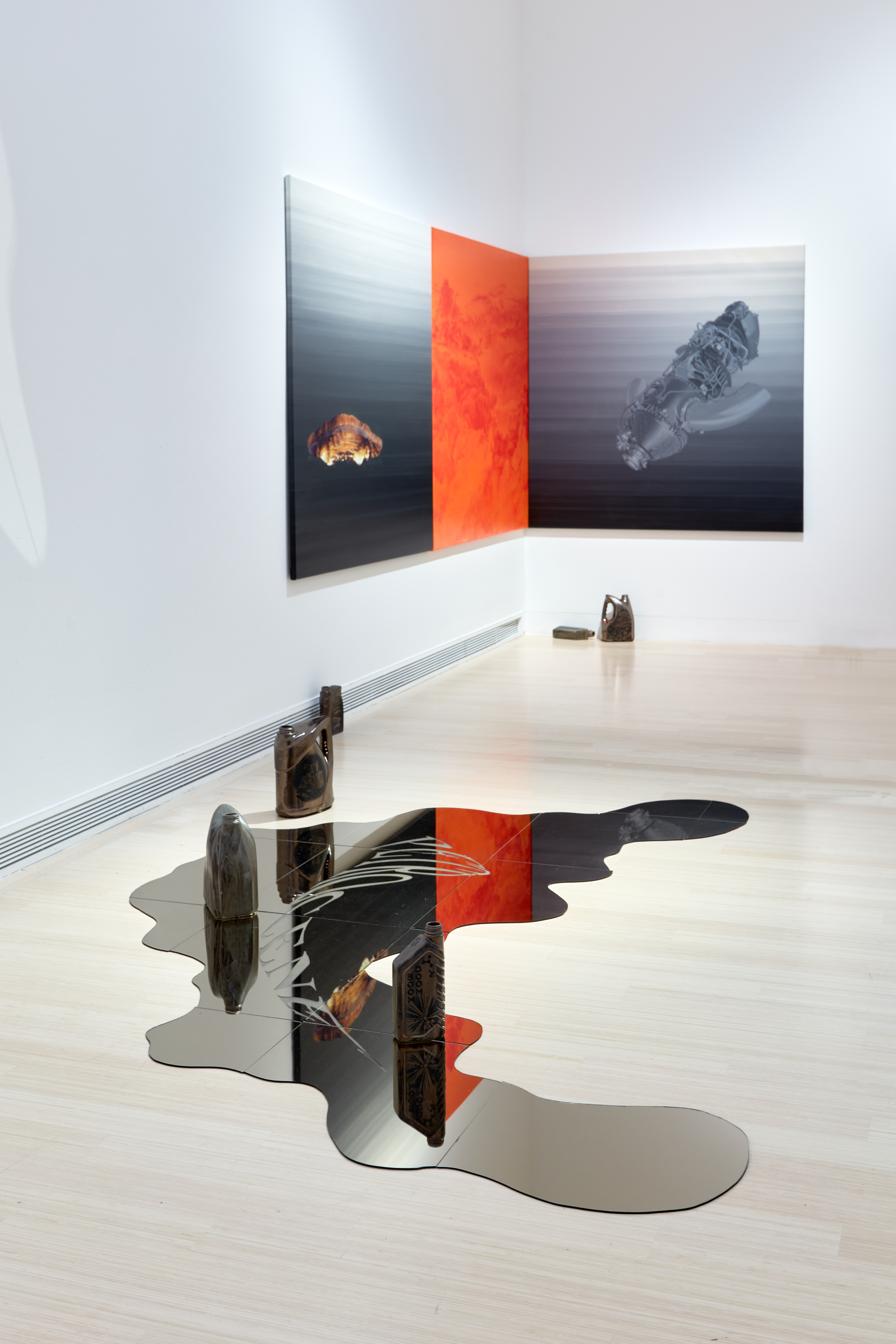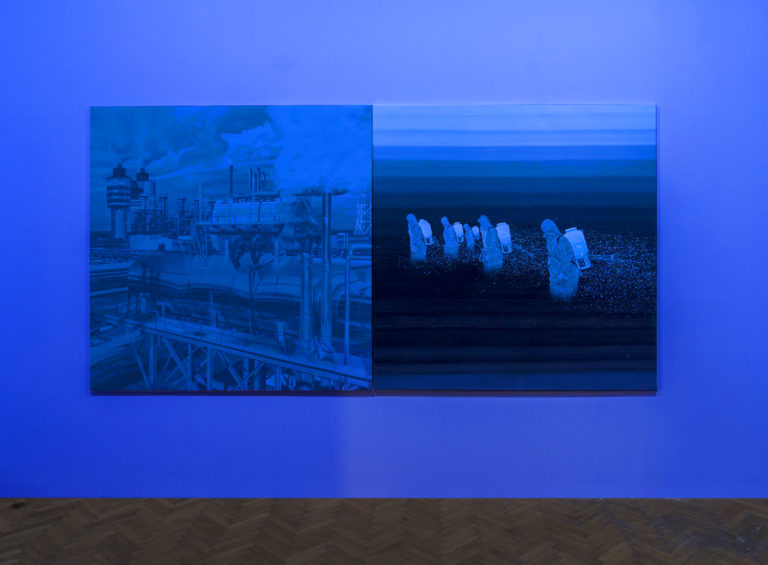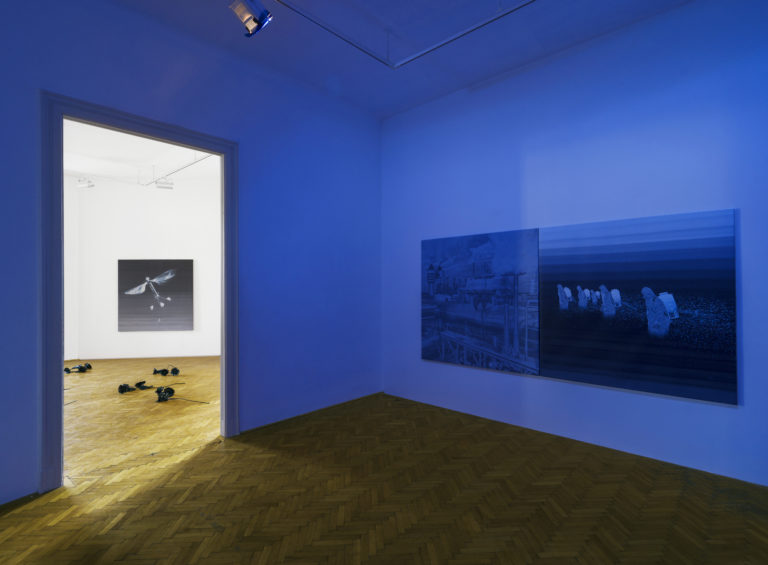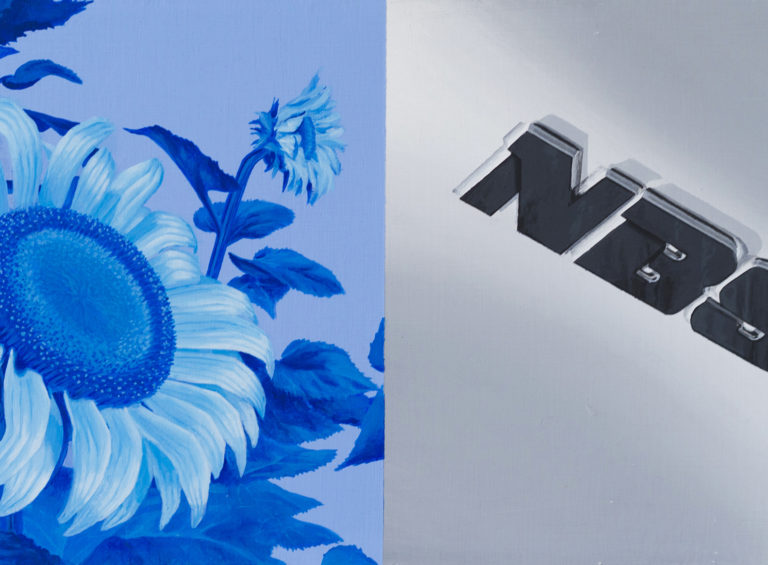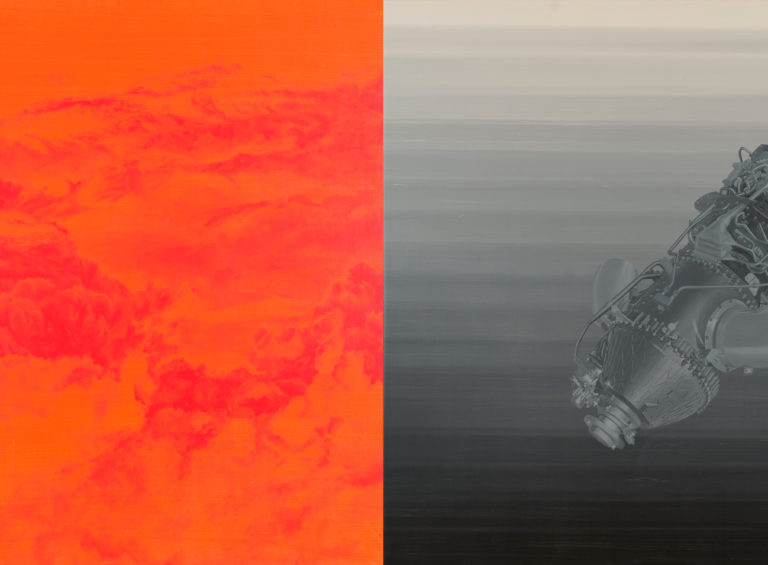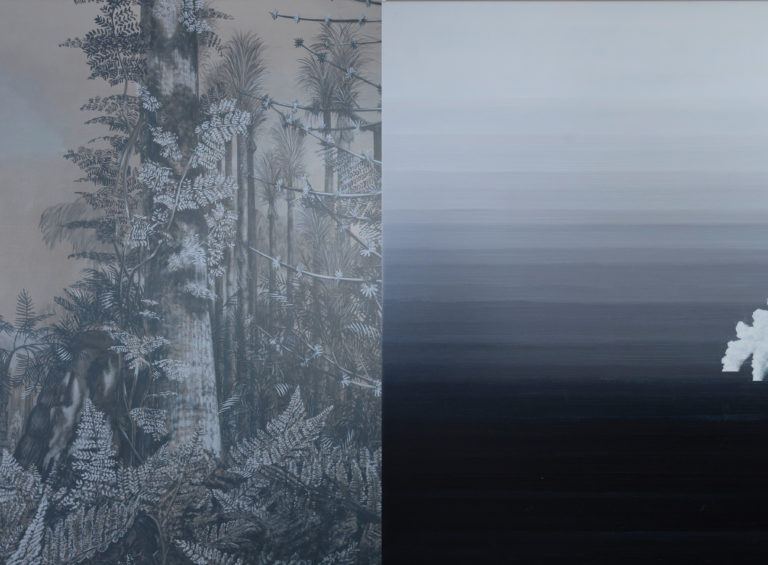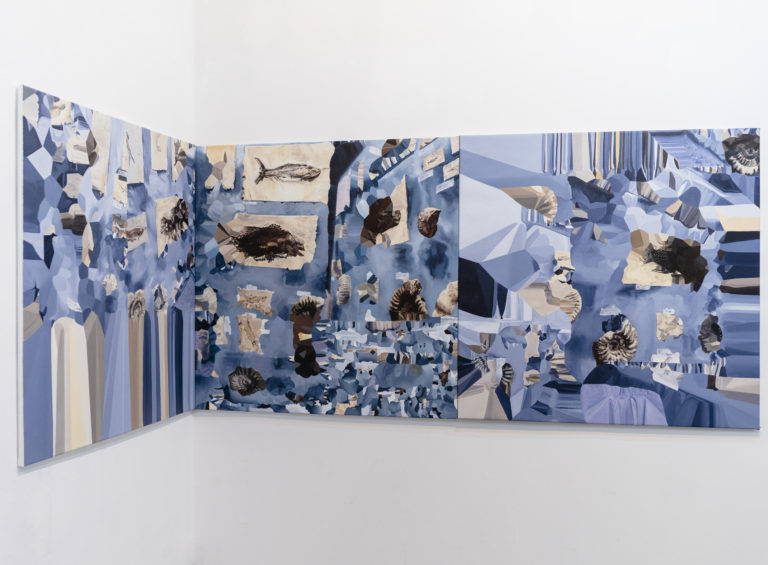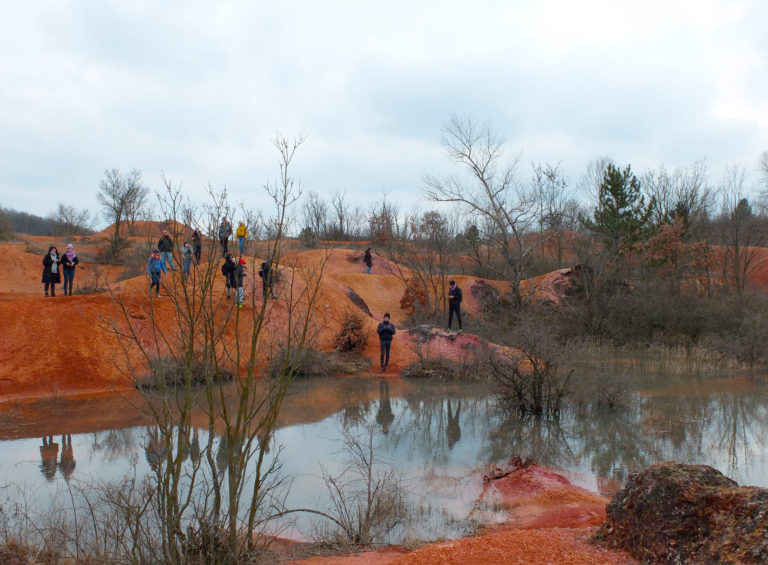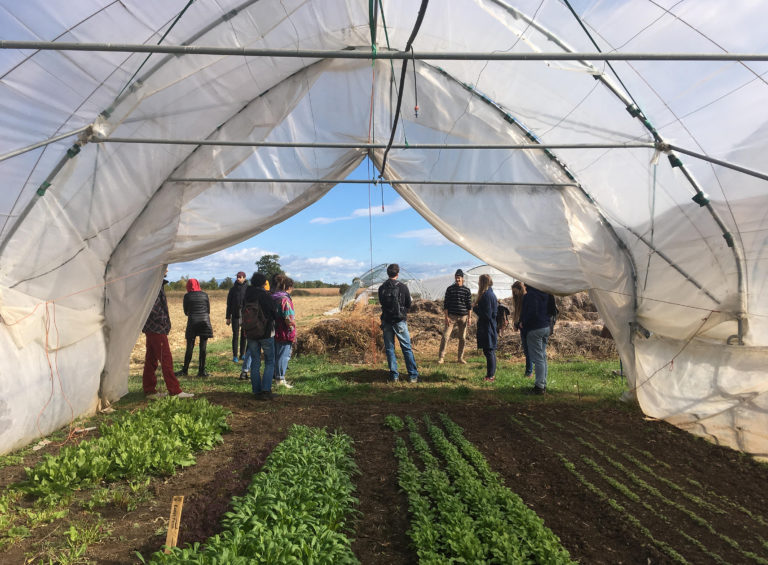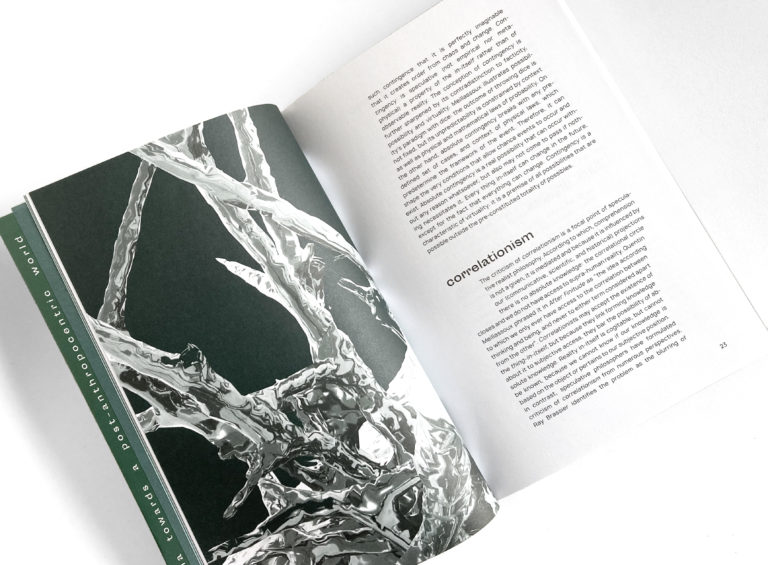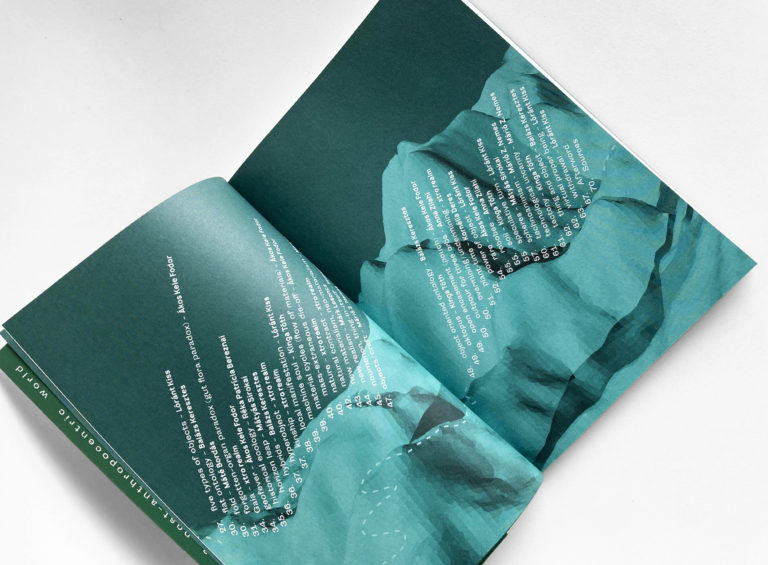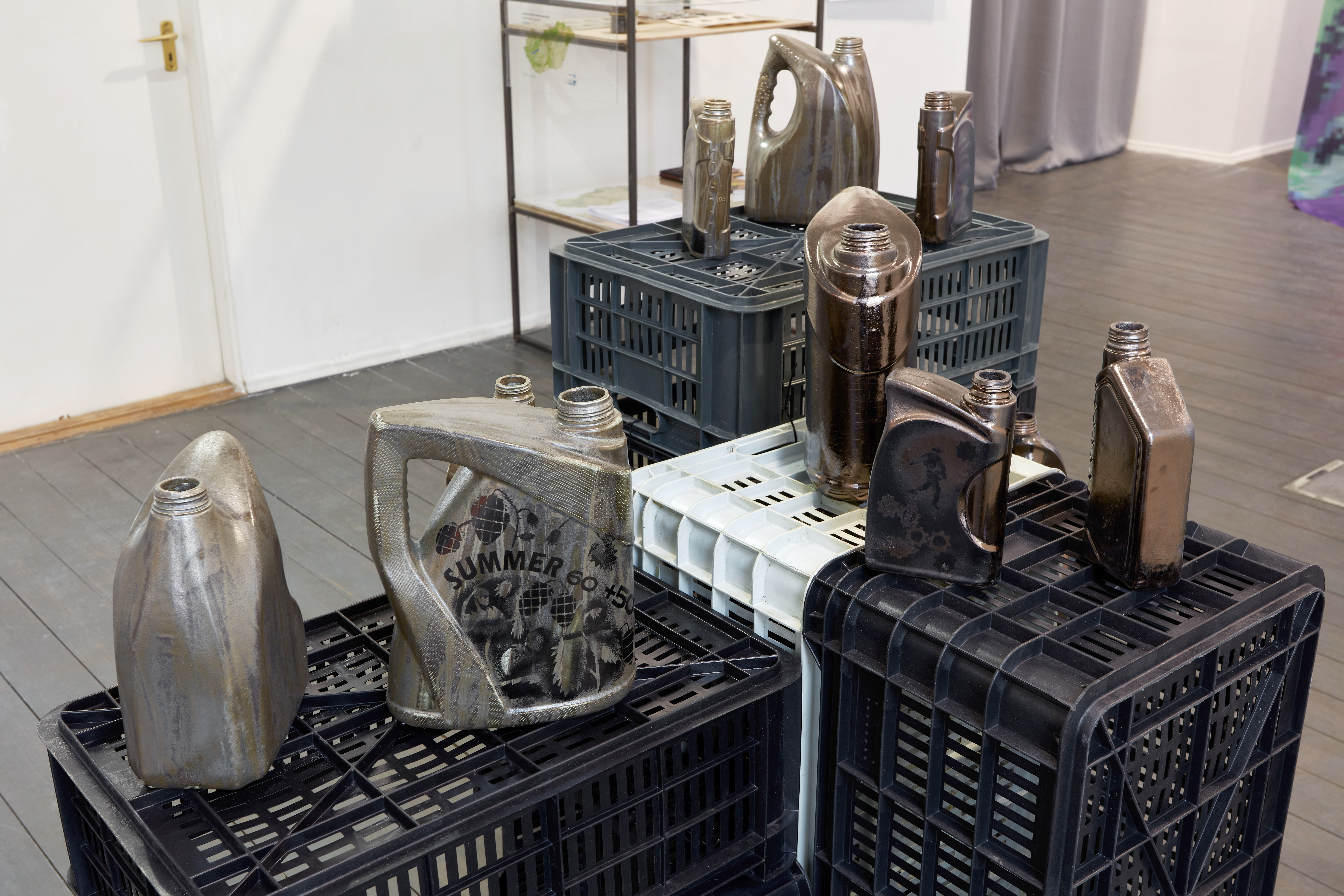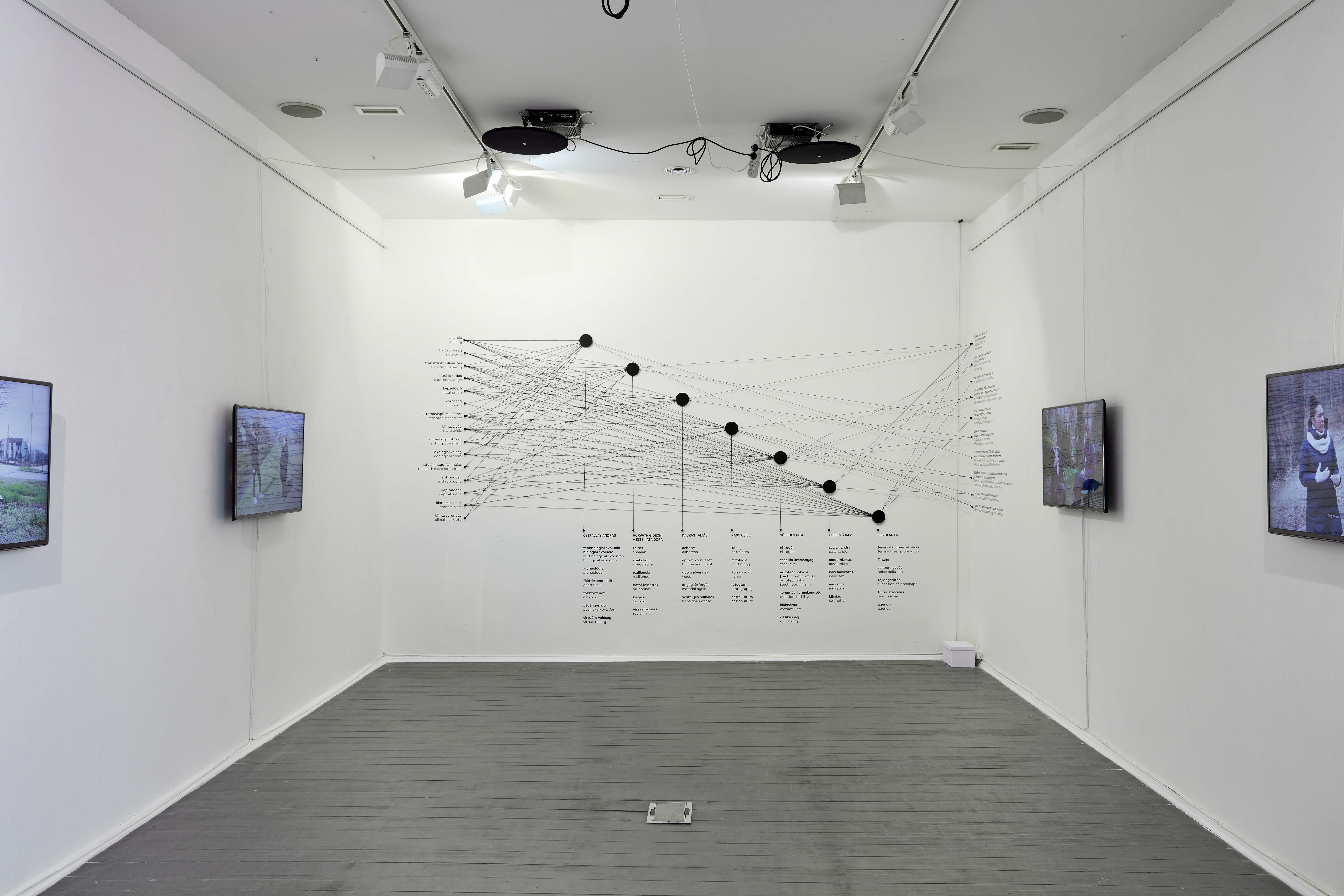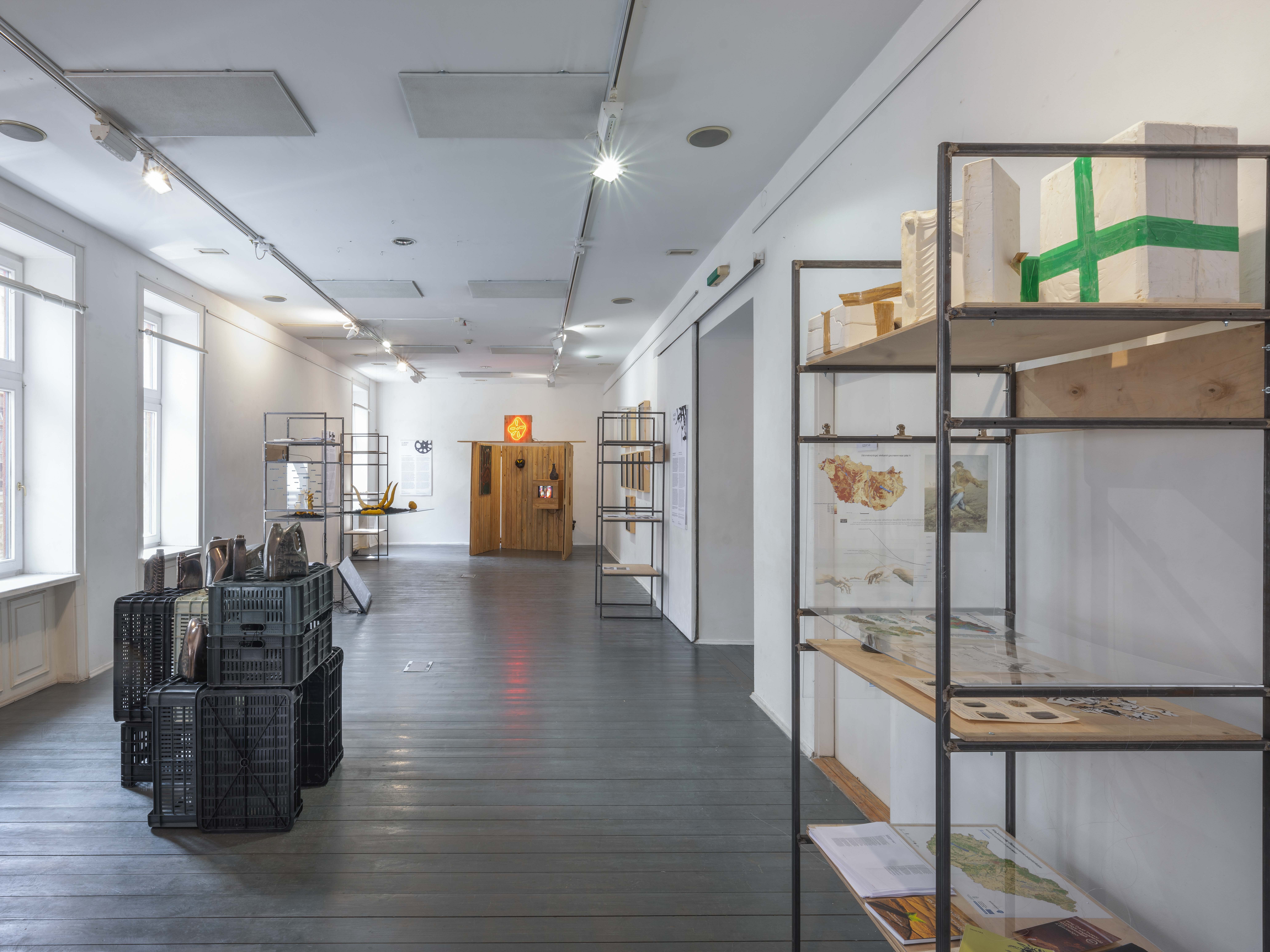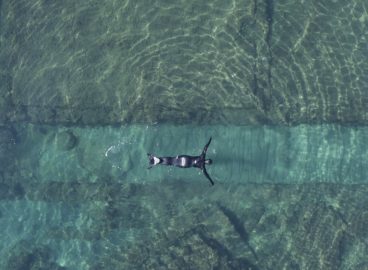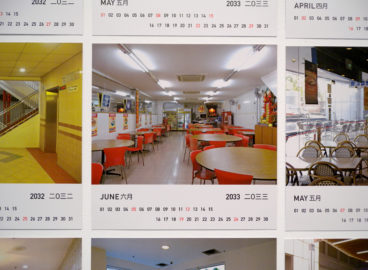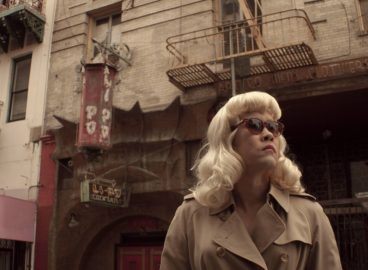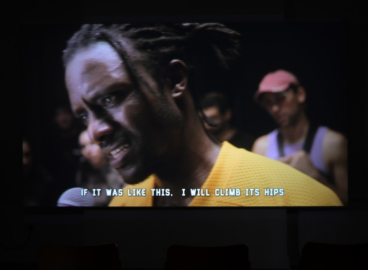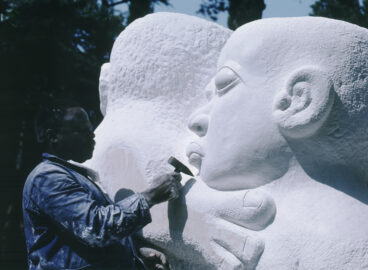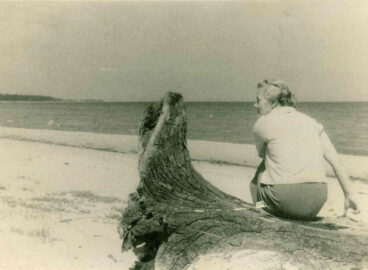The thorniest questions of industrial agriculture, techno-optimism, and the fossil energy infrastructure are distilled into the compositions of Budapest-based artist Rita Süveges. Trained as a painter, Süveges is also co-founder of the interdisciplinary artist group xtro realm, whose mission is to bring ecological thinking to Hungarian audiences through interactive programs. In this interview, curator Veronika Molnár asks Süveges about her ecocritical art practice and recent residency at the International Studio & Curatorial Program (ISCP) in New York, as well as about the pervasive role of the current right-wing political regime in Hungary’s contemporary art scene.
Veronika Molnár: Let’s begin this conversation by acknowledging that we are in the middle of the sixth mass extinction of wildlife on Earth, and the dire consequences of the climate crisis are being felt by many. In fact, you got to experience New York’s hurricane season firsthand during your recent residency at ISCP. In the face of such precariousness, how do you approach painting, and how can this medium contribute to addressing various climate and Anthropocene-related issues?
Rita Süveges: I left New York with a very strong image in my mind, as Hurricane Ida dealt a severe blow to the immediate vicinity of ISCP, my residency program in East Williamsburg. The gas station next to my studio was essentially underwater, with cars and trucks stuck in waist-deep water. This perfectly describes what the climate crisis looks like, and what makes this picture so strong is the fact that this weather event has paralyzed the fossil energy infrastructure—which is responsible for this disruption in the first place—in a city that will be flooded by the sea in thirty years.
Painting has a tradition that is very important to me, and I love and enjoy using this medium. Some might say that other mediums have a bigger impact, but that aside, I think artistic practice differs from activism or science in the way it invites you to think about both existing and not-yet-existing phenomena. It evokes an aesthetic experience and generates emotions, and what is essential is that it works on a different register than the news or an academic paper, both of which communicate in the language of reason and logic—we know that humans are not rational beings.
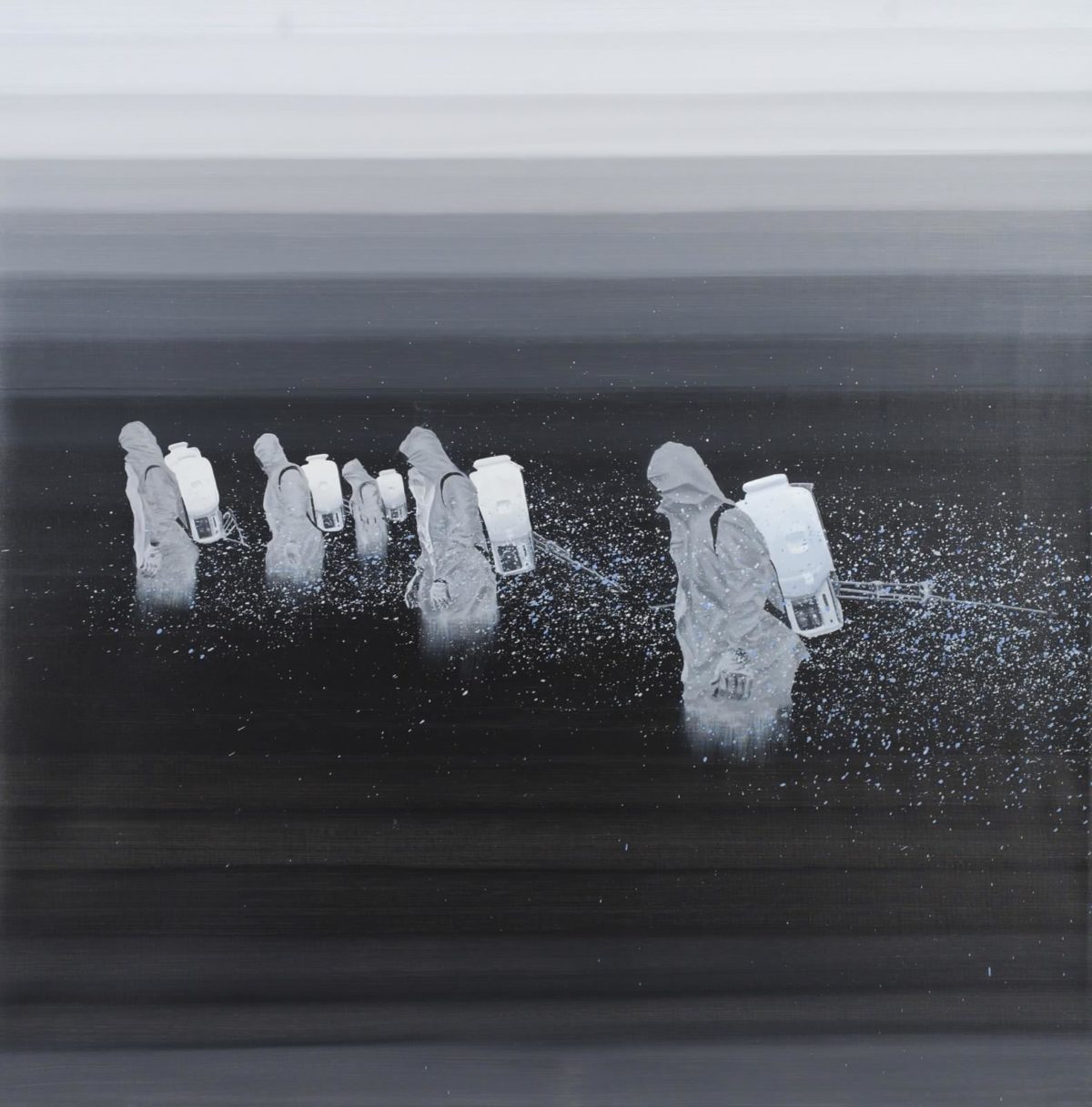
VM: In Being Ecological, Timothy Morton argues that climate change began ten thousand years ago in Mesopotamia with the development of agriculture.1Timothy Morton, Being Ecological (Cambridge, MA: MIT Press, 2018). Humans settled in cities, and their civilization and society began to separate from the nonhuman environment—which was, soon after, referred to as “nature.” In many ways, your work deals with issues of industrial agriculture, and I wonder where your interest in this complex topic originates.
RS: First of all, agriculture is one of the most violent landscape-shaping factors, and most of the time, we encounter nature through the visual representation of the landscape, which inevitably shapes our relationship to it. Then there’s also the subject of technology and how man manipulates the outside world. Since the dawn of the Enlightenment, we have been driven by the promises of technological innovation and development to use resources as efficiently as possible. It is, of course, problematic to handle the material cycle of nature as a resource, but that is another issue. I’m interested in the ways in which agriculture falls victim to the ideas of technological development and “progress” in the order of capitalist production—that is, instead of fulfilling its primary responsibility of producing food, it becomes a means of accumulating capital and thus shifts into an unequal, extractivist relationship that depletes the ecosystem.
VM: One example that keeps appearing in the news is that Brazilian farmers burn the forests of the Amazon in order to gain pastureland for growing monocultures.
RS: Yes, and on top of that, these monocultures do not even produce human food, but rather cattle feed for the US beef export. I’m interested in the expansionary logic of technological development—which is the anthropogenic impact itself and directly related to the theme of fertilizers, the production of which relies heavily on fossil fuels. After World War II, the use of fertilizers skyrocketed partly due to the fact that nitrogen—the primary raw material in fertilizers—had previously been utilized as an explosive! With the end of the war, to replace the shrinking military market, nitrogen producers were looking for new buyers: what they used to sell to the military industry, they now sell to agricultural companies in the name of the Green Revolution, which, due to technology transfer initiatives between 1950 and the late 1960s, rapidly increased agricultural production.
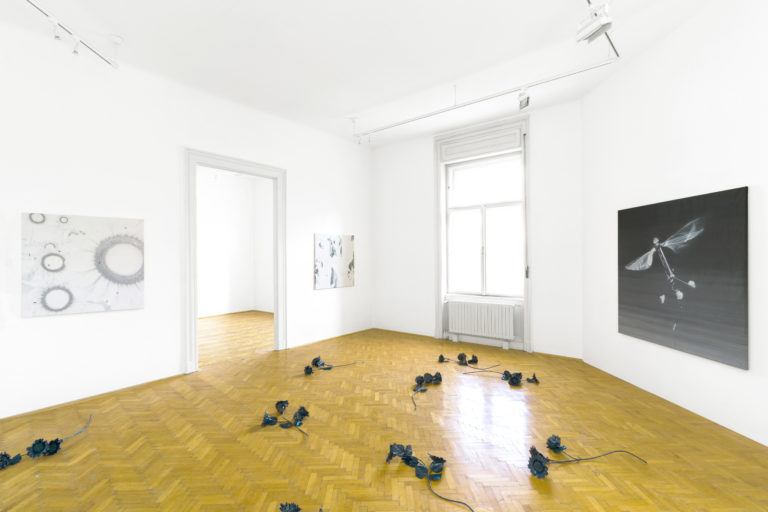
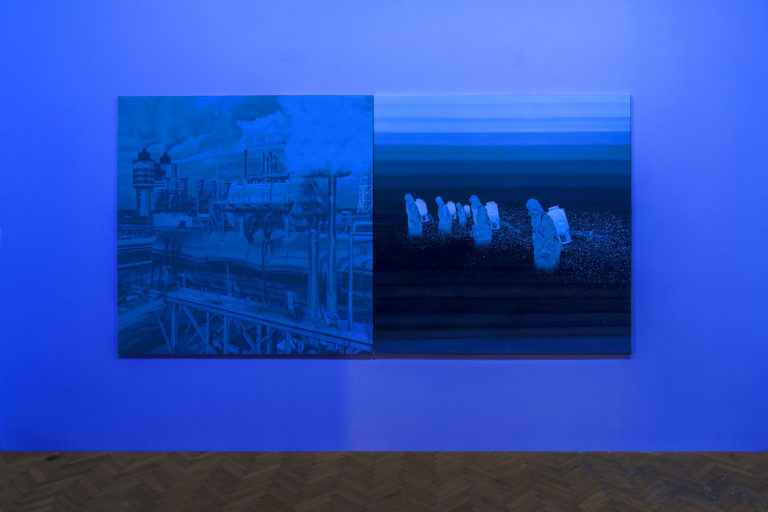
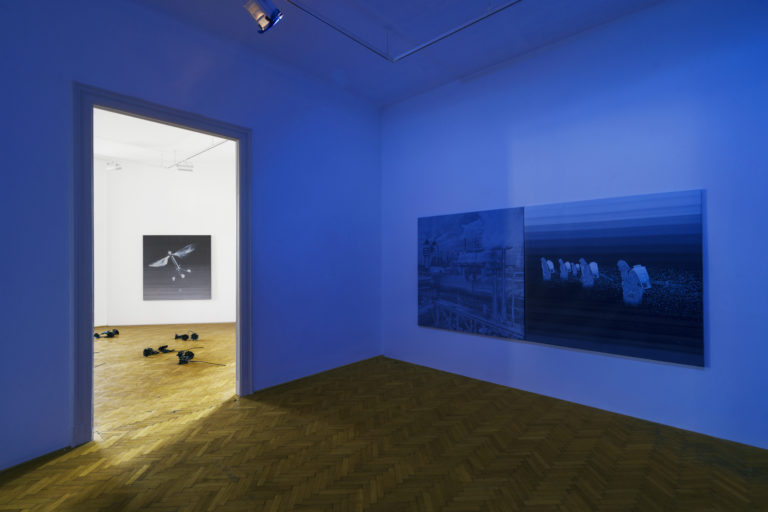

VM: The painting of a robotic bee in your exhibition All Mere Weeds perhaps dovetails with this logic. I was hoping that the Black Mirror episode about these creatures would remain dystopian, but it seems that this is the direction in which we are heading.
RS: There are areas in China where real humans pollinate apple trees by hand with Q-tips, not only because the pollinators that were once part of the natural ecosystem are now extinct, but also because human labor is cheaper than hiring bee colonies. And at Harvard University, small robotic bees are being developed to do the job for even less. But is a new technology really the answer to the environmental collapse caused by human activity? Another important question is whether manual pollination is slave labor and whose work the robotic bees will take over. All the complex services, raw materials, and material cycles of an ecosystem cannot be translated into economic calculations, engineering blueprints, future simulations, and mechanized processes as the industry imagines. It’s about our lives, what we eat, how we work, whether our environment is livable—all these questions arise in connection with the robotic bee.
VM: To talk about another project of yours—even the title ‘out of control’ has an intriguing story: it is the term used by an Australian map application to describe a forest fire that has become unstoppable. It’s interesting to consider this designation in the context of the US, where such a term would not seem appropriate; the tracker of the New York Times, for example, indicates what percentage of a fire is “contained.” Can you tell us a little bit about this project?
RS: In ‘out of control’ I deal with the fossil energy infrastructure as the protagonist of the climate crisis. There are carbon atoms in almost everything on Earth; carbon transforms in a continuous cycle, and fossil fuels are also made of carbon atoms. So, I found it intriguing that in petrocapitalism, it is not only a political, economic, and environmental problem that can be discovered, but also a philosophical one—that is, the problem of deep time. The energy (life) that the ecosystem has accumulated over millions of years is burned by human societies in a century and a half, which is only a moment in geological time, and we are surprised that the natural cycle of matter is overthrown.
I made diptychs in which I placed the material and symbolic meanings of petroculture in dialogue. Take, for example, oceanic plankton and calcareous skeletons, which under the influence of heat and pressure over millions of years, turn into crude oil. Those who refuel their car with diesel rarely think about this. At the same time, there is a special custom in Azerbaijan—patients are immersed in a crude oil bath due to its alleged healing effect. This mystical logic caught my imagination: the country’s main raw material brings not only wealth but also health to its citizens. Or consider that the culture of masculinity is associated with petroleum, through car culture, speed, and demonstration of power, and how this can be paralleled with the extractivist exploitation of nature’s reproductive processes, such as mining.
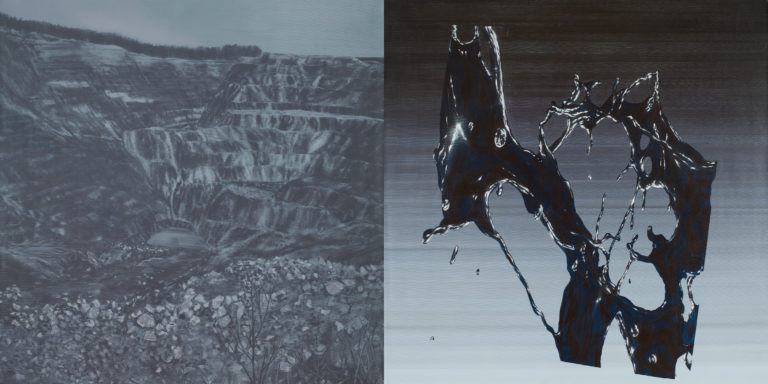
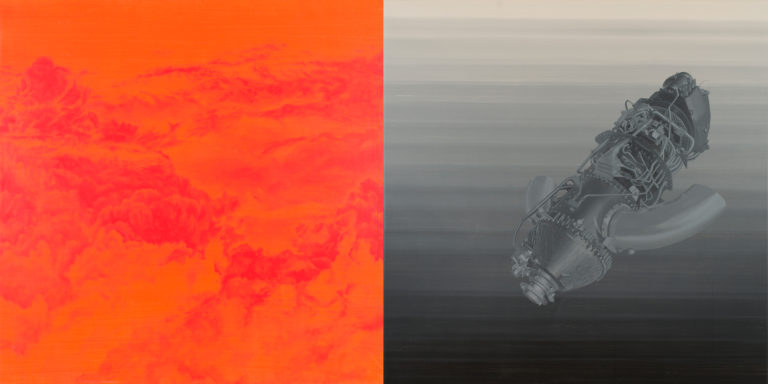
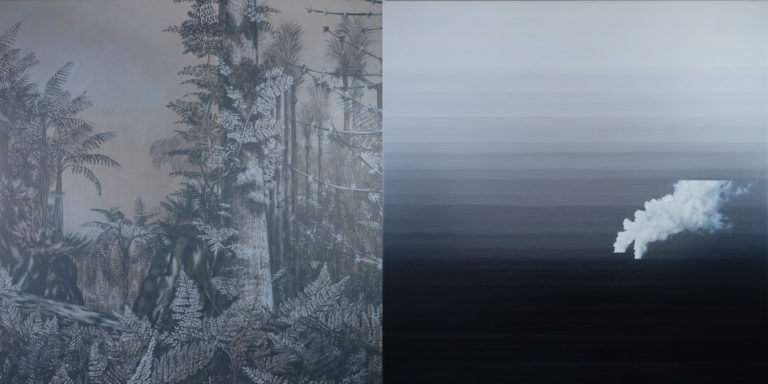
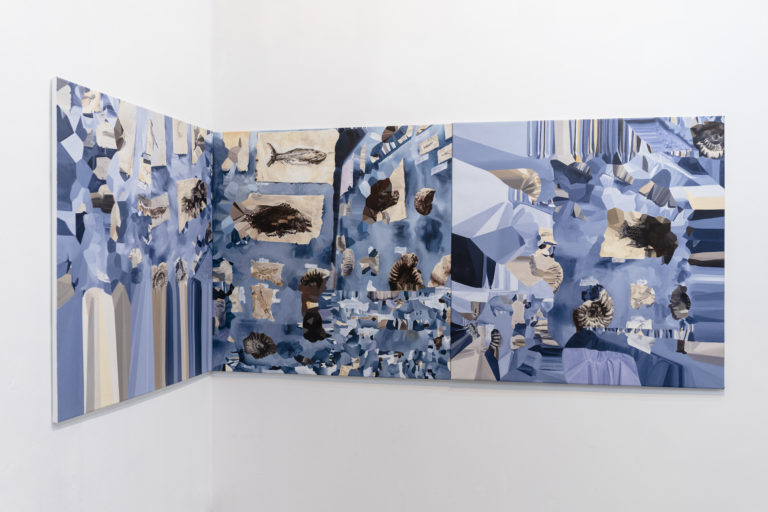
VM: Maybe here we can segue into the multidisciplinary artist group xtro realm’s activities. I’m curious to hear about the work you do with your co-founders Anna Zilahi and Gideon Horváth, and the ways in which your role at xtro complements your own practice.
RS: In the last four years, we have organized exhibitions, reading circles, field trips, lectures, and a series of studies, as well as published a book. What we are most proud of is that we have brought the topic of climate and ecological crisis into the field of contemporary art in Hungary, and done so with a critical approach—so that we have always discussed social aspects and, let’s say, geology at the same time. Anna and I edited the Climate Imaginary Reader and invited young scholars to propose local responses to the global challenges of the climate crisis—each in their own fields, like ecofeminism, biopolitics, energy policy, food production, and so on. The texts ascribe to the principles of interdisciplinarity and interconnectedness as practices that underpin radical imagination. Through xtro’s events, one of our main goals was to connect disciplines, because the climate crisis must obviously be discussed in the context of the capitalist system of production that runs the world and, inevitably, the social inequalities that result from it.
To answer your second question, my white cube exhibitions have been complemented by field trips, which I have organized within xtro realm. On the Anthropocene excursions, we went straight “into” the landscape to talk about nature, what capitalism has to do with the environment, how the interconnected perspective of ecology can be extended beyond nature—or, to put it simply, what the difference is between trees planted in a square grid and a forest ecosystem. On another trip, we visited a Hungarian oil refinery with critical energy researcher John Szabó. We were dressed in safety uniforms and toured around the steamy and smelly cyberpunk scenery of cracking plants and fractionators, and then discussed the geopolitics of energy systems. It is an essential part of my creative practice to generate dialogue through provoking experiences.
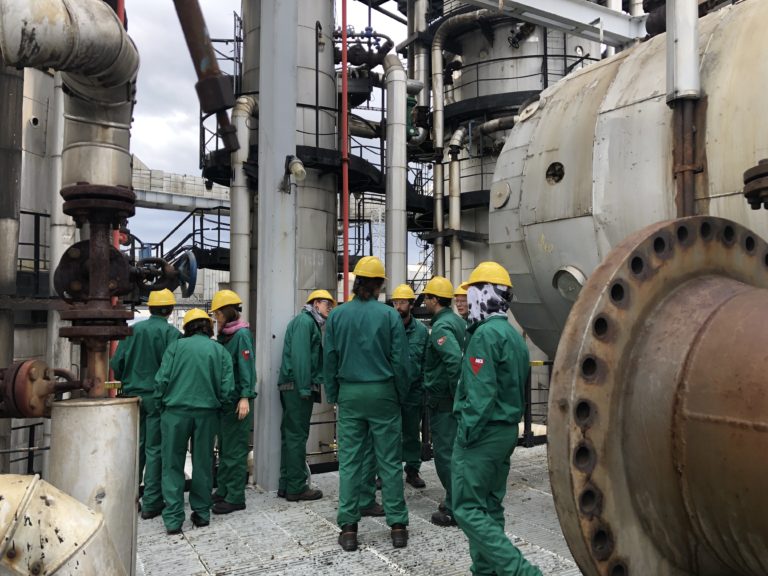
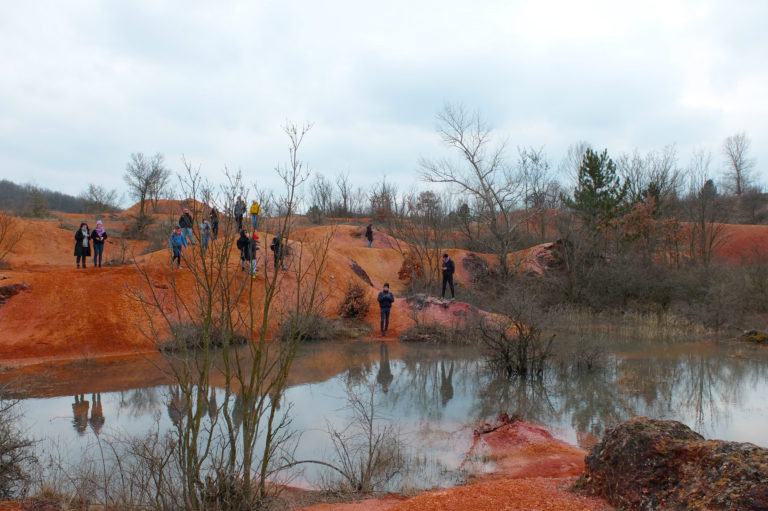
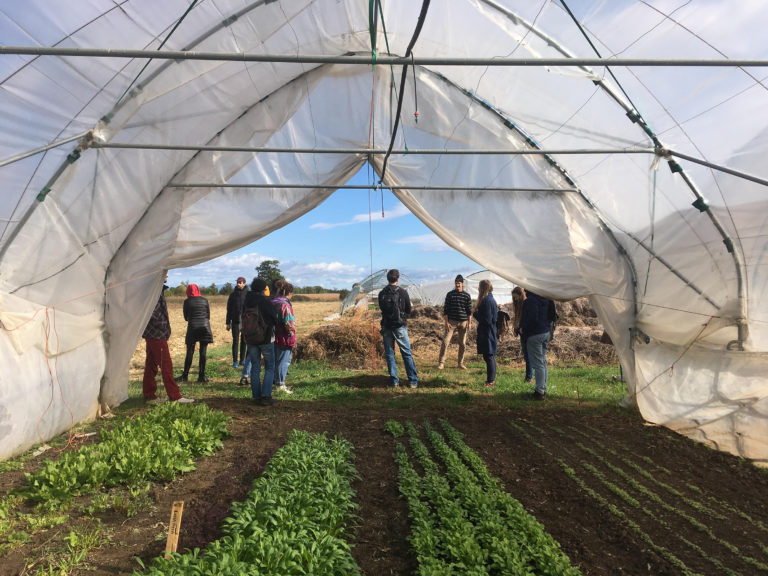
VM: In 2019 xtro realm published an “Encyclopedia towards a post-anthropocentric world” entitled extrodaesia, in which you introduced concepts such as new materialism and object-oriented ontology (OOO). One of the most defining theses of OOO is that things cannot be comprehended merely by their attributes or relations; nevertheless, you used an encyclopedia format, which has the general purpose of systematizing and summarizing knowledge. How did you approach this contradiction between form and content?
RS: We have found that the Hungarian public is not familiar with new concepts related to ecology, such as OOO or the thoughts of Bruno Latour and the Anthropocene, so we thought it would be a good idea to introduce these notions in one volume. But we have twisted the concept of an encyclopedia: the main endeavor was to juxtapose poetic texts and the visual map interweaving the book with theoretical entries. We wanted to blur the boundaries separating imagination and theory to question the concept of knowledge-production originating from the Enlightenment; thus, in extrodaesia, emotions and intuitions are put into dialogue with so-called rational and objective knowledge.
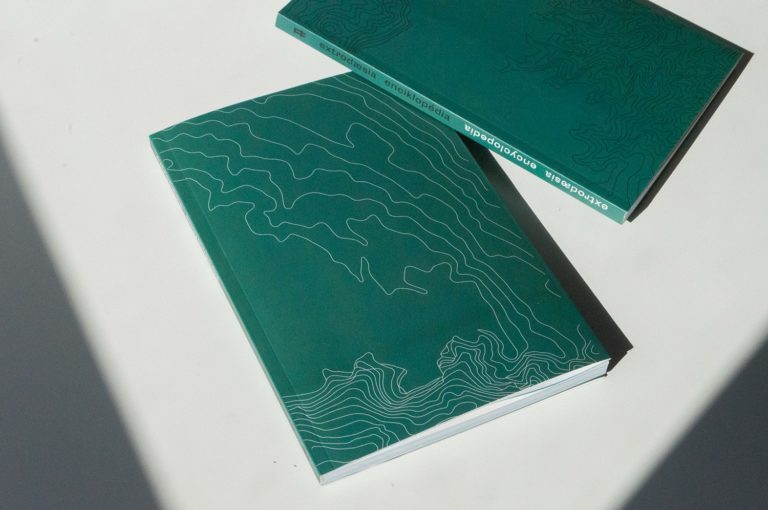
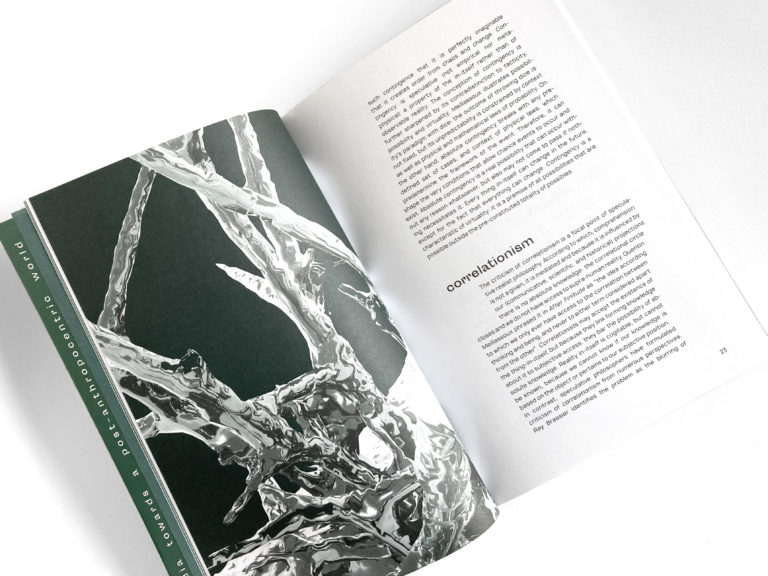
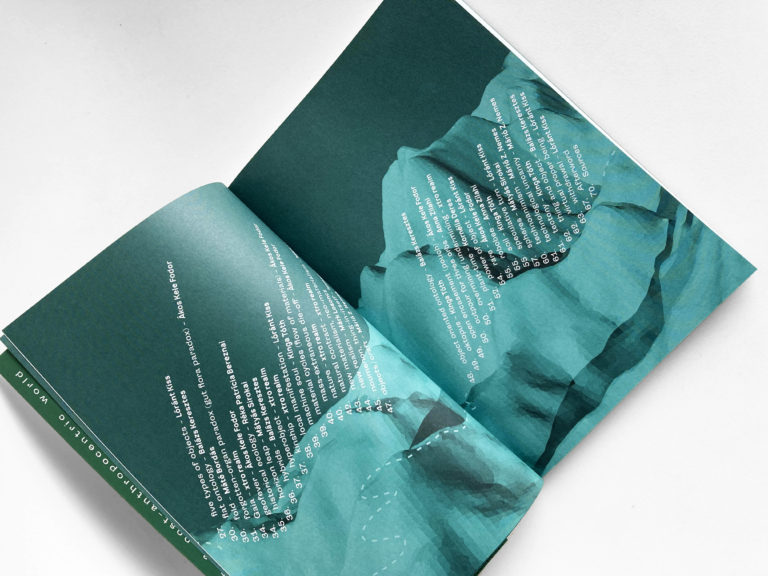
VM: Tell us a little bit about xtro realm’s most ambitious project to date: ACLIM! Agency for Climate Imaginary!, which was exhibited in 2021 at OFF-Biennale Budapest.2OFF-Biennale Budapest, which began in 2014 as a grassroots initiative, is now the largest independent contemporary art event in Hungary. You have expanded the network and activities of the group through collaboration with professionals working in different disciplines within the agency. Did this association come together for only the OFF-Biennale, or could it become a long-term project?
RS: The exhibition was the culmination of a two-year process in which we organized several public events under the name Climate Crisis and Imagination, with the aim to create a transdisciplinary discourse around the topic of the ecological and climate crisis. Our method was to explore the cultural, material, and historical embeddedness that restricts our imagination on individual and social levels. To quote Fredric Jameson, “Someone once said that it is easier to imagine the end of the world than to imagine the end of capitalism.”3Fredric Jameson, “Future City,” New Left Review 21 (May/June 2003): 76. So we examined the factors that make us unable to imagine another structure of life.
The ACLIM! Agency for Climate Imaginary! exhibition comprised seven new research-based commissions by artists, and was accompanied by events, and the Reader. We also conducted interviews and, due to the precarious COVID-19 situation, have archived the project on our web platform.
The xtro realm group has been working together enthusiastically for four years, on a volunteer basis and severely underfunded, and now we are thinking about ways to make such a project sustainable so that self-exploitation does not lead to a dead end, as is often the case in the art world.
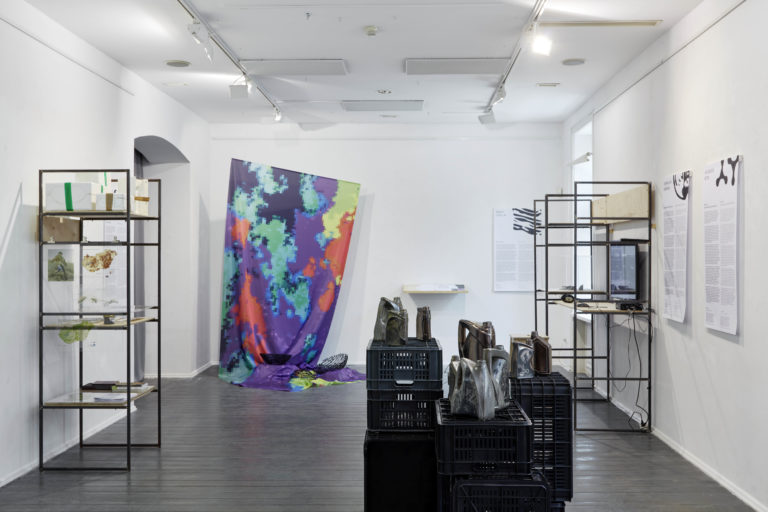
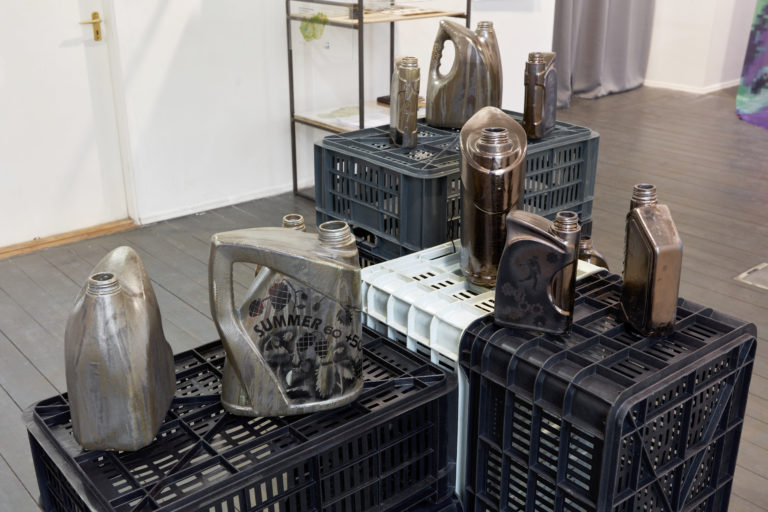
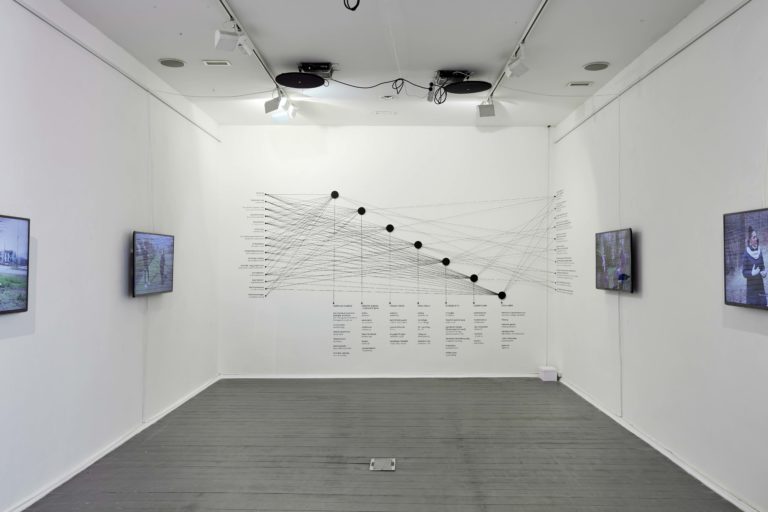
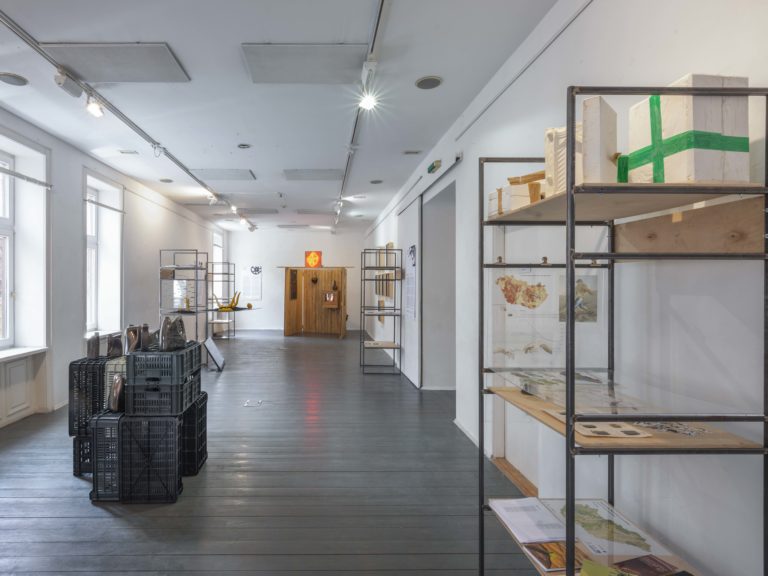
VM: Though your works are not explicitly critical of the government, I wonder if you’ve experienced any form of censorship—or any bizarre reactions from Hungarian art institutions. In my experience, as long as you’re under the radar, you can do anything in small, financially independent art spaces (although they are few and far between), but venues such as the Ludwig Museum or the Hungarian National Gallery are so influential and visible that self-censorship is unwittingly a factor.
RS: The somewhat worn-out system of art institutions is open to us and accepting of our activities—as for its administrators, political means mentioning Viktor Orbán, which we rarely do publicly. However, we have had a few rejections from scientific institutions, namely for our exhibition ACLIM!, which we curated for the OFF-Biennale. We wanted to carry out the group show in collaboration with researchers at a scientific institution, in addition to using their space for the exhibition, but the management did not want to risk presenting anything that might seem oppositional. We also attempted to collaborate with a research institute but got rejected after the director who was supposed to host our project was dismissed due to repeatedly voicing his criticism of the government to the media.
VM: I want to mention your residency at the International Studio & Curatorial Program as well. It was a relatively short program, but I would be curious to hear if you’ve encountered a phenomenon, either local or global, that has caught your attention, or that you’d like to focus on in the future.
RS: I spent two months at ISCP through the support of the Visegrad Fund. I only got a glimpse of New York as a cultural center and center of consumerism, which I involuntarily and immediately became part of. Of course, I already felt guilty because of flying back and forth across the ocean, which emits as much CO2 as if I was driving from the suburbs to downtown Budapest every day for a whole year.
Of all the peak capitalist messes, the oil story gets me the most: Greenpoint has been part of American oil history since Newtown Creek was a heavy industrial district with huge oil refineries. Although these refineries stopped operating in the 1960s, they left an estimated 15 to 30 million gallons of oil pollution underground. This so-called tar blob is the second largest oil spill in the US, and it is right in New York City! Crude oil is constantly leaking into the Creek and evaporating into the air, so allegedly there’s a disproportionate number of cancer cases in the area. ExxonMobile is heir to the refineries that created the crisis, and thanks to strong activism and artistic work, it is finally beginning to clean up the site, which will take decades. This blob is also an uncanny picture—to end the interview with another symbolic image—that, polluting the spirit of New York, is a black stain on the city’s collective subconscious.
Translated by Sári Nemes
- 1Timothy Morton, Being Ecological (Cambridge, MA: MIT Press, 2018).
- 2OFF-Biennale Budapest, which began in 2014 as a grassroots initiative, is now the largest independent contemporary art event in Hungary.
- 3Fredric Jameson, “Future City,” New Left Review 21 (May/June 2003): 76.
